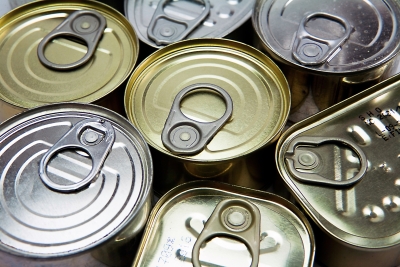
People had been trying for thousands of years to find better ways to preserve food for a long time. The first patent for a ‘tin canister’ for preserving food was granted in England to Peter Durand in 1810. He got the idea from the canisters in which tea was packed. In America, the name became shortened to ‘tin can’, and the industry was called ‘canning’, while in England it is known as ‘tinning’.
The first cannery in the United States was one for fish, and was started by Ezra Dagget in New York City in 1819. Heinz & Company began producing baked beans in tomato sauce at Richmond, Victoria on October 1, 1935. To cam a food successfully, it must be heated enough to kill the organism (moulds, yeasts, bacteria) that may cause fresh food to spoil; the tin can or glass jar must be free from germs and it must be sealed air-tight.
|
Fact File In 1810 the French chef called Nicholas Appert discovered a way of preserving food by packing food into wide-mouth bottles. He sealed the bottles and then lowered them into a boiler filled with hot water. A lid was put on, so that the bottles would heat in their boiling water bath. Some foods, fruit and vegetables in particular, may also be preserved by pickling then stored in jars. |
